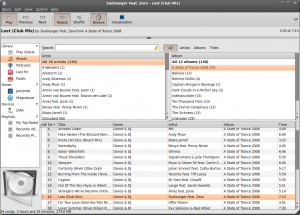I’ve ranted about this before in another post, but it’s so damnably obnoxious that I can’t contain myself.
Before I start, I want to address the disagreement some of you are bound to have–yes, yes, I know that video tutorials have their place. For example, they might be exceedingly helpful for individuals whose tech level is below such threshold that they have a difficult time understanding the difference between left and right click. Or perhaps it’s a topic that requires some visual guidance such as conceptual demonstrations for Blender, Photoshop, or various other things that are highly interactive and not easily explained. (I still appeal that a skilled writer can explain anything with the written word that a video tutorial can–it’s just that some things are easier to convey visually.)
That, of course, is not the point of this post. The point is that there is a right way to illustrate simple concepts such as a single configuration change in an OS, and there are many more wrong ways to do the same thing.
Here’s an example. I haven’t (until recently) been using Ubuntu much, mostly because I’m in the process of abandoning Gentoo. Thus, I couldn’t remember specifically how to move the window interaction widgets (close, minimize, and maximize) to the right. I immediately stumbled across numerous sites that had embedded Youtube videos like this one.
I promptly closed them.
Video tutorials are a time sink. Generally, the viewer will have wasted at least one minute listening to someone introduce themselves, why they’re important, and then rant about whatever solution they’re going to demonstrate. Then, when the star of the show finally gets to the meat of a discussion that should take less than 15 seconds to explain, they invariably drone on and on about what items to click on, where to enter the change, and we get to stumble over each typo with our hapless host for 20 painful seconds. Once we’re finally presented with useful information, our brains have collectively rotted so severely that we have no recollection of what we were initially researching or attempting to resolve. This is the wrong way to share information. Worse, if one were to add up the total time consumed by video tutorials, minus the 5 seconds of useful information, there are hundreds of hours being wasted every day. It may not be Farmville, but it is close.
Side note: I’m not picking on the video I linked to above–I actually haven’t watched it–but I did see one earlier today where it took the individual recording it about 5 attempts to type gconf-editor correctly.
How then is the right way to do this? Easy. Howtogeek typically does things the right way in a manner that is insanely easy to follow, and you’d have to be comatose to have any difficulty with their tutorials. There are many more examples of how to illustrate a very simple concept quickly and efficiently, both in terms of time and bandwidth.
In other words, a good rule of thumb to follow is that if you can explain the concept in less than a paragraph, a video tutorial is like nuking your house from orbit because you’re too inept to fumble around for a slipper to kill that pesky house spider. That there are video tutorials on how to boil water worries me. Has our society grown so collectively dependent on instant gratification that we can’t so much as spend the time to read something?
Hint: It almost always takes longer to sit and watch an instructional video than it otherwise would to read those same instructions. Ever wonder why those cabinet kits you buy at the store have a piece of folded paper stuffed inside the hardware bag instead of a DVD? Paper is cheaper, for one, and for two, the average consumer is free to stare at the diagram (usually poorly written) for as long as they like; with an equally poorly recorded instructional video, I can only imagine that same consumer replaying the same 5 second segment two or three dozen times trying to figure out that the wooden dowel does, in fact, go inside the hole.
Let me reiterate my pet peeve about frivolous video tutorials:
Stop.
This.
Insanity.
Right.
Now.
Your unnecessary video tutorials are wasting bandwidth, and for most people looking for a quick solution (or reminder), a video tutorial is simply going to waste their time. Certainly, video tutorials are handy for individuals who may not know where to click on something, but I don’t see how it’s any faster than making a single post with a handful of easy to follow written instructions. Click here, click here, type this, press enter, look for item X, change it to Y, click close, done. See? Easy.
For those of you who link to every single obnoxious video tutorial on Youtube for all of your woes, please stop. Find something more meaningful like a textual post. It might surprise you to discover that some of us know how to read.
Video rots the brain, and get off my lawn.
Update: I decided to do some research, and while it doesn’t specifically address video tutorials, I think that usability expert Jakob Nielsen has an article worth reading that targets video on the web. It’s not the same thing, but I do feel that it applies tangentially to this topic.



